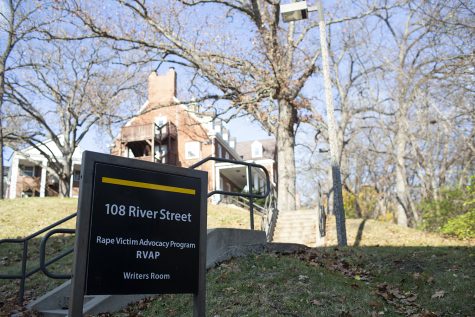University of Iowa research lights the way for root canal healing
A new tool developed by the UI College of Dentistry uses UV wavelengths to kill bacteria and promote healing at root canal sites.
The Old Capitol is seen on Thursday, Nov. 30, 2017.
August 26, 2019
New research at the University of Iowa aims to reduce the risk of infection and decrease potential pain for those undergoing root-canal procedures by using light.
After many years of research, Kimberly Morio, an adjunct faculty member at the UI College of Dentistry, is hoping to increase healing time for root canal patients using UV light technology.
Morio said her top priority when managing infections is effectively sterilizing the area, for which she developed the new device.
“We know that through our research now and through current practices that we could be doing a better job of doing that,” Morio said. “This is important just due to the fact that we think that we’re going to be able to more effectively manage those bacteria and infections within the spaces.”
Researchers hope to decrease pain and increase prognosis in the long term, she said. Director of the Iowa Oral Health Institute Kim Brogden assisted Morio in her research.
The device uses UV wavelengths, which Brogden said can sterilize bacteria at the root-canal site. She emphasized that Morio’s innovation is made possible because of UV technology developed in the past few years.
While UV light has been known to have germicidal properties for many years, she said it has only recently been able to be used in extremely small spaces such as a tooth.
“That’s really where a lot of Morio’s invention comes from — using these really small light sources to be able to channel the light down into a space small enough that you could actually put into a root canal to actually kill organisms,” Brogden said. “That technology really didn’t exist as recent as two or three years.”
Morio said she was drawn to specialize in endodontics to help patients with pain. She completed training during her residency on microbiology and microfilms on infected teeth.
“That’s what led me into all of this research and trying to develop a device that would be easy for clinicians to use but keep the main goal or factor — as it should be for all physicians — patient care,” she said.
The proof of concept paper, “255-nm Light-emitting Diode Kills Enterococcus faecalis and Induces the Production of Cellular Biomarkers in Human Embryonic Palatal Mesenchyme Cells and Gingival Fibroblasts,” was published in the Journal of Endodontics in June.
RELATED: UI joins program giving free dental care to veterans
The paper stressed the need to find new methods for treating infected root canal areas.
“The successful treatment of infected or inflamed endodontic tissues requires chem-mechanical debridement of the canal spaces and proper sealing of the coronal and apical canal openings,” the paper reads.
During a root canal, an endodontist will remove the infected pulp of a tooth. Morio’s device is intended to provide an easy way for clinicians to promote the healing of tissues beyond the typical root canal procedure, which is usually patients’ only option when needing care.
While the device is hypothesized to decrease pain, it has not yet been clinically tested on patients. Brogden and Morio are currently in the process of negotiating with potential partners to develop and mass produce the device. They also believe the device has the potential to be used as a germicide beyond root canals.
“Our whole goal is that we truly want to help patients. We want to give patients the best care,” Morio said. “In five years, I hope we’re using this and seeing those results of people having less pain and better prognosis with teeth that may not have otherwise been saved.”















